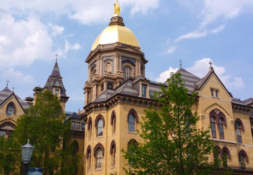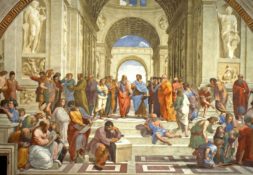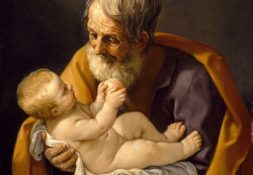Before becoming a student at the University of Notre Dame, I knew nothing about Irish folk music. That changed in April 2016 after meeting with the founder of the Irish Rover, Joe Lindsley from the Class of 2005. He was back on campus for a re-union, and in our brief conversation he mentioned that the newspaper he helped to found was named after a song.
“We named the paper after a tune called ‘The Irish Rover’,” he told me. “It’s about a shipwreck. We were anticipating that the administration would shut us down.”
I was a staff writer my first two years, and I assured Joe that the Rover was still going strong despite its share of rough seas and long odds. But later that evening, when I returned to the study-loft in Alumni Hall, I decided to consult the Rover’s source material. So I put on my headphones and looked-up the ballad of “The Irish Rover.”
In the year of our Lord 1806
We set sail from the coal quay of Cork
We were sailing away with a cargo of bricks
For the grand City Hall in New York
We’d an elegant craft, it was rigged for and aft
And how the wild winds drove her
She had twenty-three masts and she stood several blasts
And they called her the Irish Rover.
I wasn’t sure that this type of music fit my taste. But YouTube recommended more—“The Rocky Road to Dublin,” “The Fields of Athenry,” and “The Song of Ireland.” I listened. And I started to like it. Growing up with an Italian grandmother and a professional musician grandfather, my musical tastes were oriented toward Neapolitan songs—melodies that exalted the sun, volcanic soil, and history of Naples, Italy. The mandolins of “Santa Lucia,” “Core ‘Ngrato,” and “Nessun Dorma” were as familiar to me as mouthful of scungilli. Could my musical allegiances be so easily tossed aside?
A month later, by the time finals were done, previously unfamiliar names like The Dubliners, Ronnie Drew, and Luke Kelly had entered my musical vocabulary. What attracted me to this peculiar type of music was the same thing that attracted me to the Irish Rover newspaper—culture and identity. When Notre Dame needed a newspaper to defend and protect its Catholic character, Joe Lindsley resurrected an Irish legend. Like any good storyteller, he weaved a golden thread through the foundations of the Irish Rover in hopes of awakening a deeply held truth—that the love of a particular place on earth can point the soul towards somewhere even more beautiful and eternal.
Legendary Holy Cross priest, Father Charles Carey, summed it up in his essay “Why the Fighting Irish?” He writes, “The Irish … were never so poor in all their wanderings and sufferings that they bartered their Faith for the comforts of this life. They had little to take with them wherever they went; but the Faith was always the most precious of their paltry possessions.”
Once final exams were over, I found myself packing up while recounting the Rover’s many contributions to life at Notre Dame. But, recalling Joe Lindsley’s words, I also understood that the Rover is a fragile thing. Eleven years of rushing headlong into stiff winds has its perils.
As I drove home for the summer, heading east, I listened to more Irish songs including “Molly Malone” and “The Town I Love So Well.” Then I happened upon a melody called “Rare Auld Times.”
Raised on songs & stories, heroes of renown
The passing tales & glories that once was Dublin town
The hallowed halls & houses, the haunting children’s rhymes
That once was Dublin city in the rare auld times.
“Rare Auld Times” is about the loss of a place and the traditions that define it. Nowadays, we are prone to sweep such thoughts away and celebrate it as “change.” At the Irish Rover, we are both the keepers of tradition and chroniclers of change. Like the singers of Irish songs, we often find ourselves grieving change more than celebrating it.
Great enterprises aren’t just held together by brick-and-mortar. They can only survive by the passing on of “songs and stories.”
At Notre Dame we have our own, unique songs—the Alma Mater, the Victory March, and the Celtic Chant to name a few. They convey a sense of Notre Dame’s soul and give us something to love when we are no longer in sight of the Golden Dome. We have stories, too. The adventures of Father Edward Sorin, Blessed Basil Moreau, and Knute Rockne are timeless. They will remind us of this famous place and its virtues long after we have parted ways with it.
We also have the Basilica with its towering spires, the Grotto with its shadows and candles, and even my own Alumni Hall with its turrets and gargoyles. Each reminds us of deeply held truths and traditions as they point us towards that ultimate Truth, Jesus Christ, and the Tradition of His Holy Church. At the Irish Rover, we sing songs of truth and tradition. At times, this has lead us into treacherous waters. But nevertheless, we will sail on, in hopes of reaching safe harbor.
Michael Singleton is a junior and the Publisher of the Irish Rover. If you would like to make a financial contribution to keep this worthy ship afloat please contact him at msingle1@nd.edu.





Leave a Reply